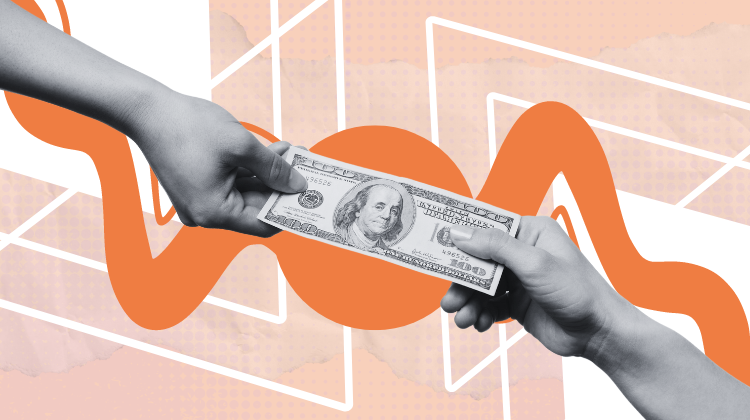How rising chargeback costs can be a sign of underlying customer service issues
- The global volume of chargebacks has significantly increased over the last five years. But what’s causing the uptick?
- Merchants, issuers, and acquirers within the payments ecosystem can come together to create more cohesive and smoother payment experiences to cultivate greater customer loyalty, mitigate chargebacks, and reduce operational expenses, benefiting all involved.

E-commerce may bring instant gratification, but it’s opening the door for more chargebacks. The global volume of chargebacks has significantly increased over the last five years, with projections indicating it will reach $165 billion in 2024, up from around $72 billion in 2019, pre-pandemic.
But what’s causing the uptick? In large part, gaps in the customer experience may be a driving force behind the increase in chargeback rates.
Consumers aren’t receiving information when and where they need it
A lack of clear information can have consumers questioning their charges – leading to a sub-optimal experience. Over the past year, approximately 50% of consumers investigated a purchase, while 24% investigated a transaction due to issues like missing transaction information and insufficient merchant details in banking apps. For instance, insufficient details about a transaction can make consumers question a charge, as they try to remember what it was for. If they can’t recall, it may result in a chargeback.
This shows that the lack of essential features in many banking apps further exacerbates the chargeback issue. Even though financial institutions are working to improve their apps, many are still missing detailed information on purchases that helps people easily recognize all of their transactions. This gap can lead to customer dissatisfaction and attrition, especially among the younger generation, which expects a more fluid online banking experience with user-friendly and easy-to-navigate digital tools.
Better tracking and managing consumer spending calls for proactive measures and upgraded experiences from merchants. Merchants should consider issuing digital receipts to consumers directly through their customers’ banking apps to enhance transaction transparency and build better connections with consumers and their banks.
Consumers direct their concerns to their banks instead of merchants
Vague transaction information becomes particularly problematic in cases of chargeback issues for consumers, who are increasingly turning to their bank to dispute charges rather than merchants, leading to inefficiencies for everyone involved.
When consumers question a charge on their statement, they often start by contacting their bank. However, without access to more detailed information, banks are often unable to help because they have access to the same incomplete details as the consumer. The useful details, like a distinct merchant name, logo, or what was purchased, are usually held with the merchant.
Younger consumers might find this issue more frustrating because they expect quick fixes and efficient digital services and are likely to switch providers over a single inconvenience. A strong emphasis on the needs of mobile-native Gen Z and Millennials — who frequently access their financial information via smartphones — can be a strategic and valuable investment both now and in the future. This is particularly relevant for traditional financial institutions’ banking apps, which have a lot of ground to cover to match the banking apps offered by fintechs and neobanks, equipped with new features and improved CX already aimed at appealing to the younger generation.
Consumers are seeking new solutions for subscription management
The subscription economy is rapidly expanding, with projections indicating it will reach a $1.5 trillion market by 2025, up from $650 billion in 2020. However, as consumers increasingly subscribe to a wide range of services — including streaming media, retail, software, travel, and food delivery — it becomes more challenging for them to manage these subscriptions.
Consumers frequently find themselves paying for subscriptions they no longer use because canceling or pausing a subscription is often confusing and difficult by design, with ineffective management tools in their banking apps contributing to the problem. 50% of US consumers find it difficult to cancel or pause subscriptions, according to Mastercard.
As many consumers are looking to review their subscriptions due to the rising cost of living, over 50% of US consumers would find subscription management tools within their banking apps helpful, according to research by Mastercard. Consequently, some are turning to the chargeback process to resolve these issues, which creates a friction point costing both issuers and merchants.
Providing effective subscription management features in banking apps could address these issues, reducing consumer churn and disputes, while enhancing customer retention through greater transparency and control.
Transparency serves as a direct pathway to earning consumer trust and loyalty. When people have access to effective service and help, with clear information on data consent and pricing, they are more likely to trust a company and continue using its products or services leading to deeper relationships and revenue growth. On average, loyal customers spend 67% more on products and services than new customers.
How the financial industry can adapt to meet this challenge
Traditional FIs and fintechs are increasingly offering connected omnichannel payment solutions to provide a smoother shopping experience. There is a similar need for a unified system to tackle chargeback challenges. Digital receipts delivered to consumers’ home base – their banking apps – may be a powerful way forward.
More transparency and visibility should lead to better outcomes for all involved. According to a Mastercard study, 80% of merchants acknowledge that digital receipts reduce disputes and chargebacks, but only 33% offer them through banking apps.
To effectively address these issues, merchants, issuers, and acquirers within the payments ecosystem can come together to create more cohesive and smoother payment experiences. This joint effort has the potential to cultivate greater customer loyalty, mitigate chargebacks, and reduce operational expenses benefiting all involved.
Explore how issuers and merchants can advance their payment experiences with the latest in digital banking solutions by accessing Mastercard’s newest whitepaper.


